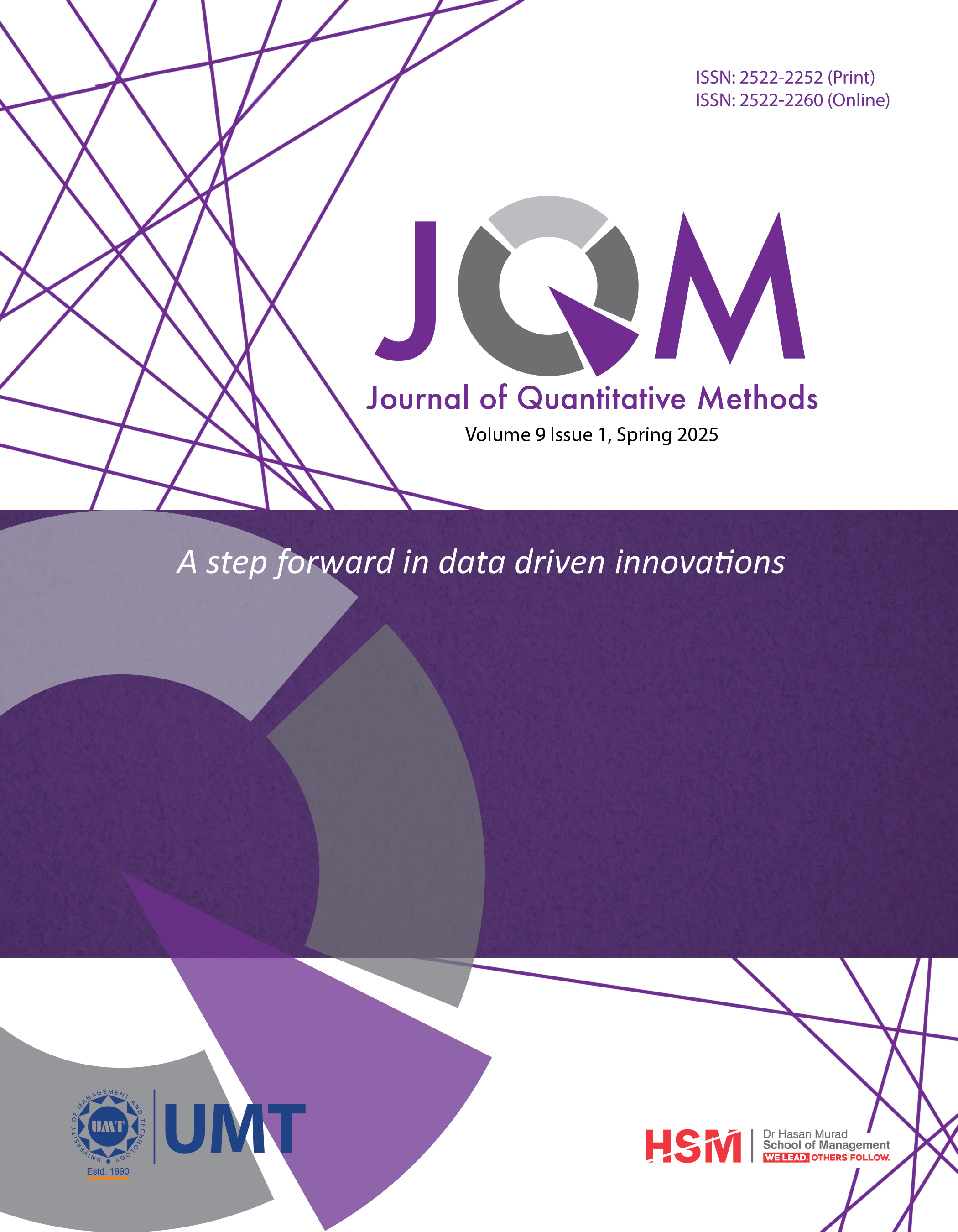Asset Index as an Indicator of Household Permanent Income in India: Comparison with Total Expenditure and Income
Abstract
Finding an appropriate proxy of permanent income has always remained a challenge to empirically analyze a diverse range of microeconomic questions. This challenge gets even more complicated in developing economies where adequate and reliable household survey data is limited, to say the least. As the commonly employed measures of economic status, in this case, that is, total consumption expenditure and income are prone to various errors, especially so in developing economies, asset indices, constructed through different methods, are employed as an alternative. The current study attempted to examine how far these measures correspond with each other. More importantly, it also represented the permanent income of households in the context of India through both phases of India Human Development Survey (IHDS). The assumption employed to determine which one of these is a better proxy of permanent income was that the permanent income of households would remain relatively the same over a decade or less. IHDS’s approach of surveying exactly the same households over 7–8 years ensures that which one of these is a better proxy of permanent income can be discerned based on the aforementioned assumption. All these measures were found to be positively correlated with each other to a moderate extent, affirming the relationships explored in the literature. Asset index was found to be a strong and much better proxy of permanent income than the other two. This study highlighted the need to explore the potential in order to employ asset index as a proxy of permanent income in different research contexts, beyond current areas of its application.
Downloads
References
Angeles, G., & You, Y. (2007). Availability of data for estimating SES indices using household surveys. Carolina Population Center.
Bouis, H. E. (1994). The effect of income on demand for food in poor countries: Are our food consumption databases giving us reliable estimates? Journal of Development Economics, 44(1), 199–226. https://doi.org/10.1016/0304-3878(94)00012-3.
Dynan, K. E., & Skinner, J., & Zeldes, S. P. (2000). Do the rich save more? National Bureau of Economic Research. https://www.nber.org/system/files/working_papers/w7906/w7906.pdf.
Filmer, D., & Pritchett, L. H. (2001). Estimating wealth effects without expenditure data—or tears: An application to educational enrollments in states of India. Demography, 38, 115–132. https://doi.org/10.1353/dem.2001.0003.
Friedman, M. (1957). A theory of the consumption function. Princeton University Press.
Gwatkin, D. R., Rustein, S., Johnson, K., Pande, R., & Wagstaff, A. (2003). Initial country-level information about socio-economic differentials in health, nutrition and population. The World Bank.
Gwatkin, D. R., Rutstein, S., Johnson, K., Suliman, E. A., & Wagstaff, A. (2007). Socio-economic differences in health, nutrition, and population within developing countries: An overview. The World Bank.
Howe, L. D. (2009). The wealth index as a measure of socioeconomic position [Doctoral dissertation, London School of Hygiene Tropical Medicine]. LSHTM Research Online. https://researchonline.lshtm.ac.uk/id/eprint/768490/.
Howe, L. D., Hargreaves, J. R., & Huttly, S. R. (2008). Issues in the construction of wealth indices for the measurement of socio-economic position in low-income countries. Emerging Themes in Epidemiology, 5, 1–14. https://doi.org/10.1186/1742-7622-5-3.
Khamis, M., Prakash, N., & Siddique, Z. (2012). Consumption and social identity: Evidence from India. Journal of Economic Behavior & Organization, 83(3), 353–371. https://doi.org/10.1016/j.jebo.2012.07.002.
Kolenikov, S., & Angeles, G. (2009). Socioeconomic status measurement with discrete proxy variables: Is principal component analysis a reliable answer?. Review of Income and Wealth, 55(1), 128–165. https://doi.org/10.1111/j.1475-4991.2008.00309.x.
Lindelow, M. (2006). Sometimes more equal than others: How health inequalities depend on the choice of welfare indicator. Health Economics, 15(3), 263–279. https://doi.org/10.1002/hec.1058.
Modigliani, F., & Brumberg, R. (1954). Utility analysis and the consumption function: An interpretation of cross-section data. Franco Modigliani, 1(1), 388–436.
Montgomery, M. R., Gragnolati, M., Burke, K. A., & Paredes, E. (2000). Measuring living standards with proxy variables. Demography, 37, 155–174. https://doi.org/10.2307/2648118.
Mukherjee, S. (2018, March 23). Big rise in farmer suicides in four states during 2016, says NCRB data. Business Standard. https://www.business-standard.com/article/economy-policy/big-rise-in-farmer-suicides-in-four-states-during-2016-says-ncrb-data-118032300025_1.html.
Naga, R. A. & Burgess, R. (1997). Prediction and determination of household permanent income. LSE Research Online. https://eprints.lse.ac.uk/2143/.
Pradhan, M. (2000). How many questions should be in a consumption questionnaire? Evidence from a repeated experiment in Indonesia (Working Paper No.112). Cornell Food and Nutrition Program.
Rutstein, S. O. (2008). The DHS wealth index: approaches for rural and urban areas. Macro International Incorporated.
Sahn, D., & Stifel, D. (2003). Exploring alternative measures of welfare in the absence of expenditure data. Review of Income and Wealth, 49(4), 463–89. https://doi.org/10.1111/j.0034-6586.2003.00100.x.
Sarfati, H. (2009). Growing unequal? Income distribution and poverty in OECD countries. International Labour Review, 148(1/2), 199–204.
Scott, C., & Amenuvegbe, B. (1990). Effect of recall duration on reporting of household expenditures. Tne World Bank.
Srivastava, A., & Mohanty, S. K. (2010). Economic proxies, household consumption and health estimates. Economic and Political Weekly, 45(16), 55–63.
The Organization for Economic Cooperation and Development. (2011). Divided we stand: Why inequality keeps rising. https://www.oecd.org/content/dam/oecd/en/publications/reports/2011/12/divided-we-stand_g1g1483d/9789264119536-en.pdf.
Ucar, B. (2015). The usability of asset index as an indicator of household economic status in Turkey: Comparison with expenditure and income data. Social Indicators Research, 121(3), 745–760. https://doi.org/10.1007/s11205-014-0670-2.
Vyas, S., & Kumaranayake, L. (2006). Constructing socio-economic status indices: How to use principal component analysis. Health Policy and Planning, 21(6), 459–68. https://doi.org/10.1093/heapol/czl029
World Health Organization. (n.d.). Length/height-for-age. Retreived August 20, 2024, https://www.who.int/toolkits/child-growth-standards/standards/length-height-for-age.
Copyright (c) 2025 Soumyajit Bhar

This work is licensed under a Creative Commons Attribution 4.0 International License.
JQM follows an open-access publishing policy and full text of all published articles is available free, immediately upon publication of an issue. The journal’s contents are published and distributed under the terms of the Creative Commons Attribution 4.0 International (CC-BY 4.0) license. Thus, the work submitted to the journal implies that it is original, unpublished work of the authors (neither published previously nor accepted/under consideration for publication elsewhere). On acceptance of a manuscript for publication, a corresponding author on the behalf of all co-authors of the manuscript will sign and submit a completed Copyright and Author Consent Form.







